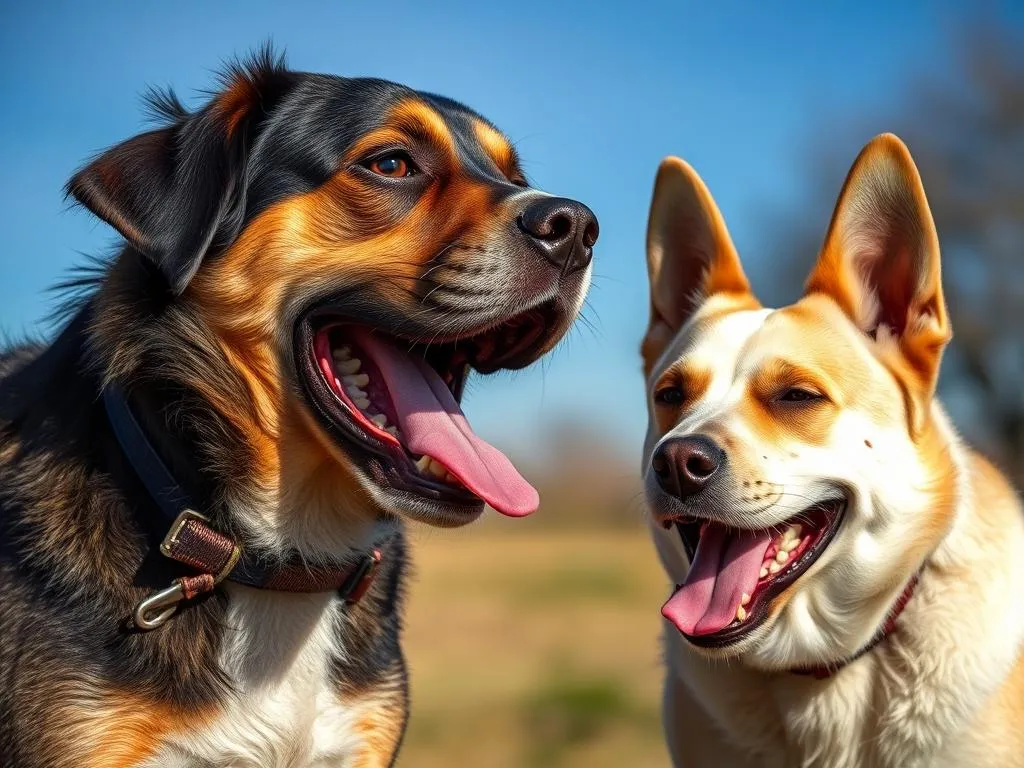
Introduction
Dog health care is crucial for the well-being of our furry companions and the safety of those around them. One of the most pressing issues in canine behavior is aggressive behavior in dogs. This type of behavior can pose serious risks not only to other pets and people but also to the dogs themselves. Understanding and addressing aggression is vital for creating a harmonious living environment. In this article, we will delve into the types of aggression, common triggers, signs of aggressive behavior, and effective strategies to stop aggressive behavior in dogs.
Understanding Dog Aggression
Types of Aggression
Aggression in dogs can manifest in various forms, each with its underlying causes. Understanding these types is essential for effective management.
-
Fear-based aggression: This occurs when a dog feels threatened or scared, leading to defensive behavior. A fearful dog may growl, bark, or even bite when it perceives danger.
-
Territorial aggression: Dogs are naturally territorial creatures. They may exhibit aggression to protect their home or yard from perceived intruders, whether human or animal.
-
Protective aggression: Similar to territorial aggression, this type arises when a dog feels the need to protect its owner or another member of its pack.
-
Social aggression: This occurs in social contexts, such as when meeting other dogs or animals. It can stem from dominance or competition for resources.
-
Predatory aggression: This is a natural instinct in some breeds, where the dog chases and potentially harms smaller animals.
Common Triggers of Aggression
Identifying the triggers of aggression is crucial for prevention and management. Common triggers include:
-
Environmental factors: Unfamiliar surroundings, loud noises, or chaotic situations can provoke aggressive responses in dogs.
-
Human interactions: Rough handling or a lack of positive social experiences can lead to fear and aggression.
-
Other animals: Encounters with other dogs or pets can trigger aggressive behavior, especially if the dog feels threatened.
-
Health issues: Pain or illness can significantly alter a dog’s temperament, leading to unexpected aggression.
Signs of Aggressive Behavior
Recognizing the signs of aggression is vital for early intervention. Key indicators include:
-
Body language cues: Growling, baring teeth, and a stiff posture are common signs of an aggressive dog.
-
Vocalizations: Barking, snarling, or a low growl can indicate a dog’s discomfort or aggression.
-
Physical actions: Lunging, snapping, or charging at a person or animal are clear signs that a dog is feeling aggressive.
Assessing the Cause of Aggression
Observational Techniques
Understanding the root cause of aggression involves careful observation and documentation.
-
Keeping a behavior diary: Tracking your dog’s behavior can help identify patterns and triggers over time.
-
Identifying patterns and triggers: Observing when and where aggressive incidents occur can provide insights into underlying issues.
-
Consulting with a veterinarian or animal behaviorist: Professional guidance can offer valuable perspectives on your dog’s behavior.
Medical Evaluation
Sometimes, aggression can be linked to underlying health issues.
-
Importance of health checks: Regular veterinary visits are essential for identifying any medical conditions that may contribute to aggressive behavior.
-
Common medical conditions leading to aggression: Conditions like hypothyroidism, neurological disorders, or chronic pain can manifest as aggression.
-
Role of medications in managing aggression: In some cases, medication prescribed by a veterinarian may help mitigate aggressive tendencies related to health issues.
Strategies to Stop Aggressive Behavior
Training and Socialization
One of the most effective ways to stop aggressive behavior in dogs is through proper training and socialization.
-
Importance of early socialization: Introducing dogs to various environments, people, and other animals at a young age can help reduce fear and aggression later in life.
-
Positive reinforcement techniques: Rewarding good behavior with treats, praise, or play encourages dogs to repeat those behaviors.
-
Obedience training strategies: Teaching basic commands (sit, stay, come) fosters good behavior and strengthens the owner-dog bond.
Behavior Modification Techniques
Behavior modification is a structured approach to changing undesirable behaviors.
-
Desensitization and counter-conditioning: Gradually exposing a dog to its triggers at a distance while rewarding calm behavior can help reduce its aggressive response.
-
Redirecting aggressive behavior: When a dog shows signs of aggression, redirecting its focus to a toy or command can help diffuse the situation.
-
Implementing a consistent routine: Dogs thrive on predictability. Establishing a daily routine can reduce anxiety and aggression.
Professional Help
In cases where aggression persists, seeking professional help is advisable.
-
When to seek help from an animal behaviorist: If your dog’s aggression escalates or poses a danger, it might be time to consult a specialist.
-
Types of training programs and classes available: Various programs focus on behavior modification and socialization, tailoring solutions to specific aggression issues.
-
The role of dog trainers in aggression management: Experienced trainers can provide hands-on guidance and support for both the dog and its owner.
Prevention of Aggressive Behavior
Creating a Safe Environment
Preventing aggression starts with a safe and supportive environment.
-
Designing a dog-friendly home: Ensure your home is free from hazards and provides a comfortable space for your dog to relax.
-
Strategies for safe outdoor experiences: Use leashes, harnesses, and muzzles when necessary to manage interactions with other dogs and people.
-
Importance of supervision: Always supervise interactions between your dog and other pets or children to prevent aggressive incidents.
Regular Health Care
Routine veterinary care is fundamental in preventing aggression.
-
Importance of routine veterinary visits: Regular check-ups help catch health issues early, which can prevent aggression stemming from pain or illness.
-
Vaccinations and parasite control: Keeping your dog up-to-date on vaccinations and parasite prevention contributes to overall health and well-being.
-
Nutrition and its role in behavior: A balanced diet supports physical health and can positively influence behavior.
Building a Strong Bond
Developing a strong relationship with your dog is key to preventing aggression.
-
Activities that strengthen the owner-dog relationship: Engaging in training, play, and walks together fosters trust and companionship.
-
Importance of trust and communication: Understanding your dog’s body language and needs can significantly reduce misunderstandings that lead to aggression.
-
Engaging in regular play and exercise: Physical activity helps expend energy and reduces stress, which can lower the likelihood of aggression.
Case Studies and Success Stories
Real-Life Examples
Real-life stories can provide hope and inspiration for dog owners facing aggression issues.
-
Narrative of a fear-aggressive dog: A young rescue dog named Bella initially showed fear-based aggression towards strangers. Through consistent positive reinforcement training and gradual desensitization, she learned to trust people and became a loving companion.
-
Territorial aggression in a rescue dog: Max, a once-abandoned dog, exhibited aggressive behavior when strangers approached his home. With the help of a behaviorist, he underwent a successful training program focused on socialization and positive reinforcement, ultimately becoming more relaxed and friendly.
Expert Insights
Veterinarians and trainers often have valuable insights into managing aggression.
-
Quotes and tips from veterinarians and dog trainers: “Understanding your dog’s triggers is the first step in addressing aggression. Patience and consistent training yield the best results.” – Dr. Jane Smith, Animal Behaviorist.
-
Common misconceptions about dog aggression: Many people believe that aggressive dogs are inherently bad, but it’s often a sign of fear, anxiety, or a lack of socialization.
Conclusion
Understanding and addressing aggressive behavior in dogs is essential for ensuring a safe and loving environment for both pets and people. By recognizing the types and triggers of aggression, assessing the underlying causes, and implementing effective strategies, dog owners can make significant strides in managing their pets’ behavior. Investing time and effort in training, socialization, and regular health care will not only enhance the quality of life for dogs but also foster a deeper bond between owners and their pets. Proactive dog health care plays a crucial role in preventing aggression and ensuring a harmonious household.
In summary, addressing aggressive behavior in dogs requires a comprehensive approach that combines education, training, and understanding. With patience and commitment, dog owners can help their pets overcome aggression and thrive in a healthy, supportive environment.









